I am reading The Sleepwalkers: How Europe Went to War in 1914 by Christopher Clark. I discover that I should know more about the history of the Balkans, the Ottoman Empire and the Ausria-Hungary Empire to properly appreciate the history. Thus I am posting this to document some of the material I am discovering.
I think of the First World War in terms of the battlefields in western Europe, especially those in which American troops fought. I suppose that is a result of my American education and culture. But of course, the proximate cause of the war was the assassination of Arch Duke Franz Ferdinand, the heir to the throne of Austria-Hungary. The assassination in Bosnia-Hertzegovina by members of a Serbian nationalist underground supported by the Serbian government was followed by a declaration of war on Serbia by Austria-Hungary, which in turn triggered further declarations of war because of the network of military alliances that had been formed among the empires of the time.
Clark however implicates the deterioration of the Ottoman Empire - the sick man of Europe. Perhaps too he implicates the deterioration of Austria Hungary - the second sick man of Europe.
The Ottoman Empire
The Ottoman Empire grew from an Anatolian emirate at the beginning of the 14th century through process of conquest in the Balkans and the eastern Mediterranean.
The Ottoman victory at Kosovo in 1389 effectively marked the end of Serbian power in the region, paving the way for Ottoman expansion into Europe. The Battle of Nicopolis in 1396, widely regarded as the last large-scale crusade of the Middle Ages, failed to stop the advance of the victorious Ottoman Turks.The Ottomans suffered setbacks when
territories in the Balkans (such as Thessaloniki, Macedonia and Kosovo) were temporarily lost after 1402, but were later recovered by Murad II between the 1430s and 1450s. On 10 November 1444, Murad II defeated the Hungarian, Polish and Wallachian armies under Władysław III of Poland (also King of Hungary) and János Hunyadi at the Battle of Varna, which was the final battle of the Crusade of Varna. Four years later, János Hunyadi prepared another army (of Hungarian and Wallachian forces) to attack the Turks, but was again defeated by Murad II at the Second Battle of Kosovo in 1448.In 1453 the Ottomans took Constantinople, conquering the remains of the Byzantine Empire. (This is well described in 1453: The Holy War for Constantinople and the Clash of Islam and the West by Roger Crowley.)
The Ottoman conquest of Constantinople in 1453 by Mehmed II cemented the status of the Empire as the preeminent power in southeastern Europe and the eastern Mediterranean.In the following decades the Ottomans extended their empire deep into Europe and north Africa, with a disciplined and innovative military aided by a powerful navy. Thus Suleiman the Magnificent (1520–1566), captured Belgrade in 1521, going on to conquer the southern and central parts of the Kingdom of Hungary. His victory in the Battle of Mohács in 1526 established Turkish rule in most of the territory of present-day Hungary as well as other central European territories. It also made conquests deep into the Mediterranean, including capturing Nice (1543) and Corsica (1553) on behalf of France.
Vienna effectively marked the limits of Ottoman expansion into Europe. The Ottoman Empire suffered reverses in the 17 century, but late in the century renewed its assertiveness. The Great Turkish War
refers to a series of conflicts between the Ottoman Empire and several contemporary European powers joined into a Holy League, beginning in 1683 and ending with the signing of Treaty of Karlowitz in 1699. The war was a defeat for the Ottoman Empire, which lost large amounts of territory in central Europe. The war was also significant in that it marked the first time Russia was involved in a western European alliance.During that war, the Ottomans conducted and failed in the great siege of Vienna (see The Enemy at the Gate: Habsburgs, Ottomans, and the Battle for Europe by Andrew Wheatcroft).
There followed a period of stagnation and reform for the Ottoman Empire:
During this period threats to the Ottoman Empire were presented by the traditional foe—the Austrian Empire—as well as by a new foe—the rising Russian Empire. The Ottoman Turks ceded much territory in the Balkans to Austria. Certain areas of the Empire, such as Egypt and Algeria, became independent in all but name, and later came under the influence of Britain and France. Later, in the 18th century, centralized authority within the Ottoman Empire gave way to varying degrees of provincial autonomy enjoyed by local governors and leaders.Leading to a long term decline is size, power and influence.
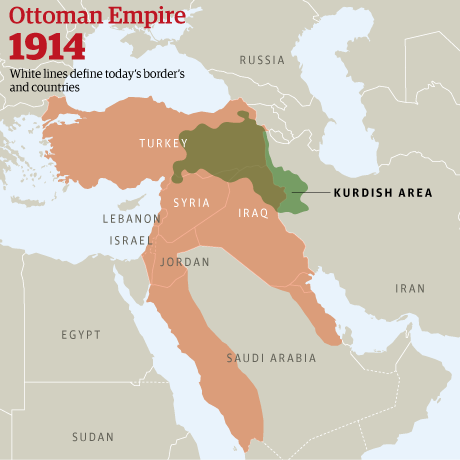 |
| Source: The Guardian |
The Habsburgs ruled a large part of Europe and indeed of the world in early modern times. In the early 16th century, the territory the family ruled was divided between a senior branch, the Spanish Habsburgs, and a junior branch, the Austrian Habsburgs. Both of these original lines died out.
The Austrian Empire was created out of the realms of the Habsburgs by proclamation in 1804. It was a multinational empire and one of the world's great powers. Subsequently, the Treaty of Pressburg (December 1805), in practice meant the dissolution of the long-lived Holy Roman Empire. There was a reorganization of the German territories lost in the process, into a precursor state of what became modern Germany, as well as other measures weakening Austria and the Habsburgs. Certain Austrian holdings in Germany were passed to French allies; Austrian claims on those German states were renounced without exception.
Austria-Hungary was a constitutional union of the Empire of Austria and the Apostolic Kingdom of Hungary. It was created after Austria's disastrous loss of the Austrian-Prussian War by the Compromise of 1867. It was ruled by the House of Habsburg, constituting the last phase in the constitutional evolution of the Habsburg Monarchy. The Austrian and the Hungarian states were co-equal within the Empire. The Compromise required regular renewal, as did the customs union between the two halves of the Empire. Foreign affairs and the military fell under common (joint) control, but all other government faculties were divided between the respective states. The Empire of Austria and the Kingdom of Hungary always maintained separate parliaments. Their division was so marked that there was no common citizenship: one was either an Austrian citizen or a Hungarian citizen, never both.
Austria-Hungary in 1914
 |
| Source |
The Balkans.
The Balkan League (Serbia, Greece, Montenegro and Bulgaria) against the Ottoman Empire
 |
| Source |
Records going back thousands of years document many peoples passing through the Balkans. The southern portion of the peninsula has been occupied by Greeks for millenniums. Two important ethnic groups were the Bulgars who first arrived in the 7th century and the South Slavs who were there by the 6th century.
Ottoman rule in the Balkans lasted from the 14th century, and reduced in extent in the 19century, until it ended in the early 20th century.
The social structure of the Balkans in the late eighteenth century was complex. The Ottoman rulers exercised control chiefly in indirect ways.[19] In Albania and Montenegro, for example, local leaders paid nominal tribute to the Empire and otherwise had little contact. Dubrovnik (Ragusa) paid an annual tribute to Constantinople but otherwise was free to pursue its rivalry with Venice. The two Romanian-speaking principalities of Moldavia and Wallachia had their own nobility, but were ruled by Greek families chosen by the Sultan. In Greece, the elite comprised clergyman and scholars, but there was scarcely any Greek aristocracy. A million or more Turks had settled in the Balkans, typically in smaller urban centers where they were garrison troops, civil servants, and craftsmen and merchants. There were also important communities of Jewish and Greek merchants. The Turks and Jews were not to be found in the countryside, so there was a very sharp social differentiation between the cities and their surrounding region in terms of language, religion and ethnicity.Nationalist revolutions in the Balkans were increasingly successful in the 19th century:
- The Greek War of Independence in the 1820s ended with the intervention of three Great Powers -- Russia, the United Kingdom and France -- and the London Protocol in 1830.
- The Russo-Turkish War (1877–1878) ended in Russian victory and the Congress of Berlin. Bulgaria, which had been under Ottoman rule for centuries, became an independent principality within the Ottoman Empire, but large populations of ethnic Bulgarians were at that time left outside of the principality.
- Bosnia, which had been under Ottoman rule from 1463, came under the rule of Austria-Hungary through the Congress of Berlin in 1878; Bosnia Herzegovina was unsuccessfully annexed to that empire in 1881, and finally became a full part of Austria-Hungary in 1908.
- The Serbian Revolution (1804 to 1835) evolved Serbia from an Ottoman province into a constitutional monarchy.
- The Principality of Montenegro was recognized as independent in 1878 after the Montenegro-Turkish Wars.
Author Clark's Discussion of the Balkans in the 20th Century
The South Slavs include Serbs, Bulgarians, Croats, Bosniaks, Slovenes, Macedonians, and Montenegrins. Certainly the national boundaries in the Balkans at the beginning of the 20th century were not drawn to unify these ethnic group, each within the border of a single ethnic state. In Serbia there was a political attachment to an idea of a "Greater Serbia" that would unit many of the South Slav ethnic groups into one country. Russians, including Russian rulers, felt a sympathy for the South Slavs, and were willing to support their nationalistic aspirations.
Clark cites the Italian annexation of territories in what is now Libya in 1912 as a key event among those leading to World War I. France was in the process of extending it imperial rule over western North Africa, and Britain was in control of Egypt and the Suez Canal; Italy, which was seeking to expand its own smaller empire, was granted license by the French and British to this annexation at the expense of the Ottoman Empire. Apparently, at the time the Entente (Britain, France and Russia) was seeking to switch Italy's allegiance from the Triple Alliance (with Germany and Austria-Hungary) to the Entente. (In fact, Italy fought with France and Britain against Austria-Hungary in World War I.)
Clark suggests that the Italian success in Libya led to the Balkan Wars of 1912-1913 in which Bulgaria, Greece and Serbia conquered large areas of the Balkans from the Ottoman Empire. These wars were ended by the Treaty of London (1913), an agreement under which Ottoman Empire would give up all territory west of the Enos-Midia line. The great powers also reached a formal decision on 29 July 1913, to establish the Principality of Albania as a sovereign state independent of the Ottoman Empire. The treaty was agreed among the six Great Powers of that time (Great Britain, France, Germany, Austria-Hungary, Russia and Italy); a coup had overthrown the rulers of the Ottoman empire in 1913, and the new ruling junta withdrew from the conference that wrote the treaty.
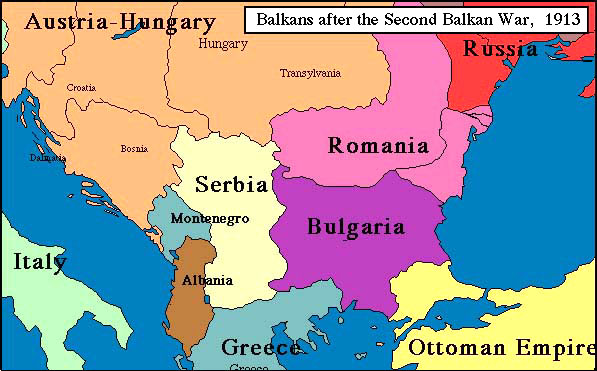 |
| Source |
Final Comments
One explanation of this precursor to World War I was that the Ottoman Empire was on its last legs, and with the support of Russia and the acquiescence of other great powers, the smaller powers of the Balkan League, driven by nationalist aspirations, fought the Ottomans and captured a significant part of the Ottoman Empire.
Clark explains how Black Hand terrorists, supported by the Serbian military, assassinated the heir to the throne of Austria-Hungary in Sarajevo, in Austro-Hungarian Bosnia. This Clark explains as a result of the aspiration of the Serbians to create a South Slav state, something which in fact happened with the creation of Yugoslavia after World War I.
World War I resulted in the destruction of the Ottoman Empire, the creation of Turkey, and the distribution of former Ottoman territories to the victors. It also led to the destruction of Austria-Hungary, and the defeat of Germany. Again, territories that had been part of their empires were distributed by the victors.
One explanation of this precursor to World War I was that the Ottoman Empire was on its last legs, and with the support of Russia and the acquiescence of other great powers, the smaller powers of the Balkan League, driven by nationalist aspirations, fought the Ottomans and captured a significant part of the Ottoman Empire.
Clark explains how Black Hand terrorists, supported by the Serbian military, assassinated the heir to the throne of Austria-Hungary in Sarajevo, in Austro-Hungarian Bosnia. This Clark explains as a result of the aspiration of the Serbians to create a South Slav state, something which in fact happened with the creation of Yugoslavia after World War I.
World War I resulted in the destruction of the Ottoman Empire, the creation of Turkey, and the distribution of former Ottoman territories to the victors. It also led to the destruction of Austria-Hungary, and the defeat of Germany. Again, territories that had been part of their empires were distributed by the victors.
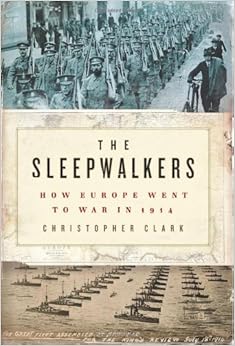
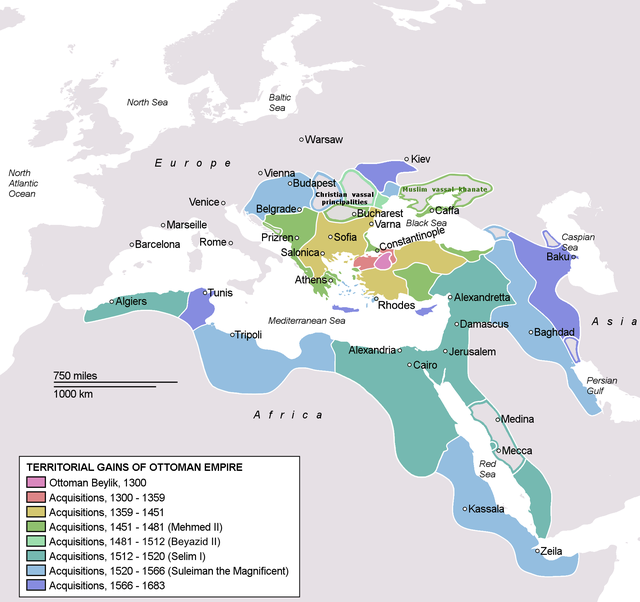
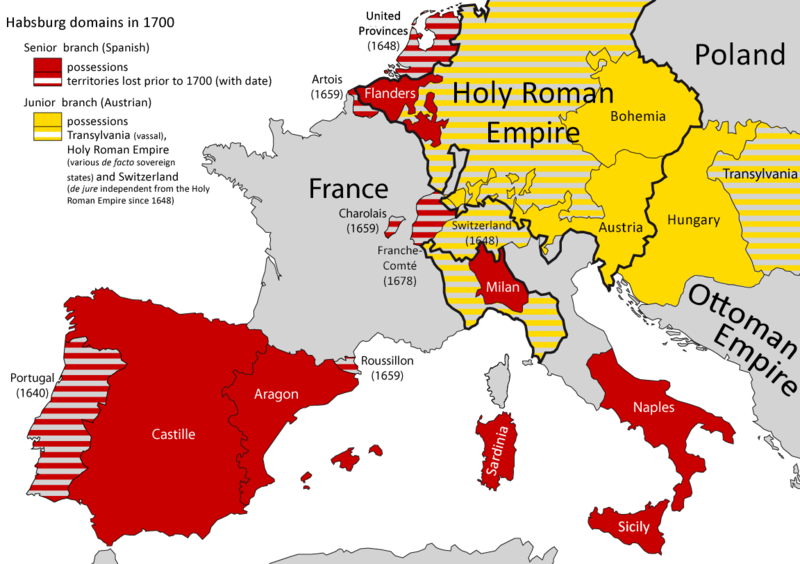
1 comment:
Warfare is a fascinating subject. Despite the dubious morality of using violence to achieve personal or political aims. It remains that conflict has been used to do just that throughout recorded history.
Your article is very well done, a good read.
Post a Comment